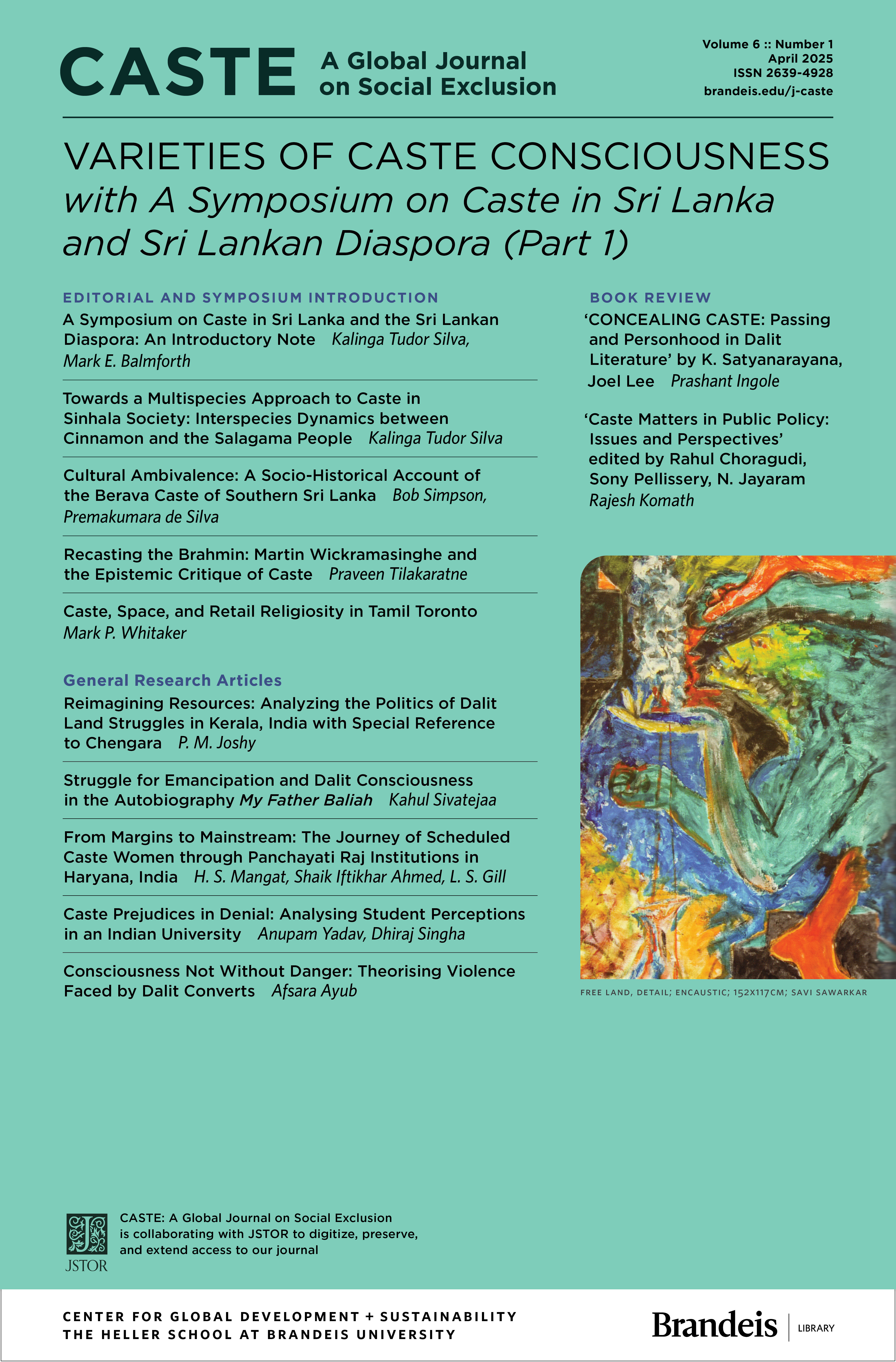Recasting the Brahmin: Martin Wickramasinghe and the Epistemic Critique of Caste
Main Article Content
Abstract
The dominant public perception is that caste is a matter of minor and diminishing significance in Sri Lanka, especially for the Sinhalese, who form the island’s ethnic majority. Although sociological and anthropological studies have pushed back against this perception, its pervasiveness and importance for modern Sinhala identity formation have resulted in questions of caste seldom being raised in the field of modern Sinhala literature. It is surprising, therefore, that the oeuvre of perhaps the most prolific Sinhala writer and public intellectual of the twentieth century, Martin Wickramasinghe, is checkered with references to caste; particularly, polemics against a “brahmin caste” that he claims is responsible for the maintenance of epistemic hierarchy in Sri Lanka and beyond. This essay distills Wickramasinghe’s caste-text through two illustrative moments, the Buddha-biographical novel Bava Taraṇaya (1973) and the essay “Bamuṇukulaya Bin̆da Væṭīma” (1956), suggesting that it advances a critique of epistemic stratification and the coloniality of knowledge through the idea of caste, while also contesting the givenness of caste as a category. Wickramasinghe’s work is a productive starting point through which an archive of anti-caste thought situated in the Sinhala literary sphere yet addressed to a wider humanity might be imagined, since his caste-text illustrates how thinking about caste in and from Sri Lanka is of value not only for its inhabitants, but also for transnational forms of politics that use caste as a nodal point for the articulation of structural inequalities and injustices that are not vestiges of antiquity but features of colonial modernity.
Downloads
Article Details

This work is licensed under a Creative Commons Attribution 4.0 International License.
A. CORRESPONDING AUTHOR’S GRANT OF RIGHTS
The Corresponding Author grants to the Journal, during the full term of copyright and any extensions or renewals of that term, the following:
- An irrevocable non-exclusive right to reproduce, republish, transmit, sell, distribute, and otherwise use the Work in electronic and print editions of the Journal and in derivative works throughout the world, in all languages, and in all media now known or later developed.
- An irrevocable non-exclusive right to create and store electronic archival copies of the Work, including the right to deposit the Work in open access digital repositories.
- An irrevocable non-exclusive right to license others to reproduce, republish, transmit, and distribute the Work under the condition that the Authors are attributed. (Currently this is carried out by publishing the content under a Creative Commons Attribution 4.0 license.)
Copyright in the Work remains with the Authors.
B. CORRESPONDING AUTHOR’S DUTIES
- When distributing or re-publishing the Work, the Corresponding Author agrees to credit the Journal as the place of first publication.
- The Corresponding Author agrees to inform the Journal of any changes in contact information.
C. CORRESPONDING AUTHOR’S WARRANTY
The Corresponding Author represents and warrants that the Work is the Authors’ original work and that it does not violate or infringe the law or the rights of any third party and, specifically, that the Work contains no matter that is defamatory or that infringes any literary or proprietary rights, intellectual property rights, or any rights of privacy. The Corresponding Author also warrants that he or she has the full power to make this agreement, and if the Work was prepared jointly, the Corresponding Author agrees to inform the Authors of the terms of this Agreement and to obtain their written permission to sign on their behalf. The Corresponding Author agrees to hold the Journal harmless from any breach of the aforestated representations.
D. JOURNAL’S DUTIES
In consideration of the Author’s grant of rights, the Journal agrees to publish the Work, attributing the Work to the Authors.
E. ENTIRE AGREEMENT
This agreement reflects the entire understanding of the parties. This agreement may be amended only in writing by an addendum signed by the parties. Amendments are incorporated by reference to this agreement.
